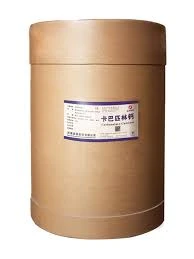- Afrikaans
- Albanian
- Amharic
- Arabic
- Armenian
- Azerbaijani
- Basque
- Belarusian
- Bengali
- Bosnian
- Bulgarian
- Catalan
- Cebuano
- Corsican
- Croatian
- Czech
- Danish
- Dutch
- English
- Esperanto
- Estonian
- Finnish
- French
- Frisian
- Galician
- Georgian
- German
- Greek
- Gujarati
- Haitian Creole
- hausa
- hawaiian
- Hebrew
- Hindi
- Miao
- Hungarian
- Icelandic
- igbo
- Indonesian
- irish
- Italian
- Japanese
- Javanese
- Kannada
- kazakh
- Khmer
- Rwandese
- Korean
- Kurdish
- Kyrgyz
- Lao
- Latin
- Latvian
- Lithuanian
- Luxembourgish
- Macedonian
- Malgashi
- Malay
- Malayalam
- Maltese
- Maori
- Marathi
- Mongolian
- Myanmar
- Nepali
- Norwegian
- Norwegian
- Occitan
- Pashto
- Persian
- Polish
- Portuguese
- Punjabi
- Romanian
- Russian
- Samoan
- Scottish Gaelic
- Serbian
- Sesotho
- Shona
- Sindhi
- Sinhala
- Slovak
- Slovenian
- Somali
- Spanish
- Sundanese
- Swahili
- Swedish
- Tagalog
- Tajik
- Tamil
- Tatar
- Telugu
- Thai
- Turkish
- Turkmen
- Ukrainian
- Urdu
- Uighur
- Uzbek
- Vietnamese
- Welsh
- Bantu
- Yiddish
- Yoruba
- Zulu
9 月 . 30, 2024 23:31 Back to list
Tylosin Injection Dosage Guidelines for Effective Use in Veterinary Medicine
Tylosin Injection Dosage A Comprehensive Guide
Tylosin is a macrolide antibiotic that is widely used in veterinary medicine for the treatment of various bacterial infections in animals, especially in livestock and poultry. As with any medication, proper dosing is crucial for ensuring the efficacy of tylosin while minimizing potential side effects. This article aims to provide comprehensive information regarding the dosage of tylosin injections, addressing its indications, dosing guidelines, and important considerations for practitioners.
Indications for Tylosin Injection
Tylosin is effective against a range of gram-positive bacteria and some gram-negative pathogens. It is commonly used to treat respiratory infections in cattle, swine, and poultry, as well as certain types of enteritis and soft tissue infections. Tylosin is also used for its anti-inflammatory properties, especially in mucosal disease of swine and other gastrointestinal disturbances.
Tylosin Injection Dosage Recommendations
The dosage of tylosin can vary depending on the species being treated, the severity of the infection, and the specific formulation of the medication. However, general dosing guidelines are as follows
1. Cattle The standard dosage for injectable tylosin in cattle is typically between 10 to 20 mg/kg of body weight. This can be administered once daily for a duration of 3 to 5 days, depending on the severity of the condition. For chronic infections, treatments may need to be extended upon veterinary advice.
2. Swine For swine, the recommended dose of tylosin is about 10 to 20 mg/kg, administered via intramuscular injection. Similar to cattle, this dosing can be performed once daily for several days based on clinical judgement.
3. Poultry Poultry, particularly for conditions such as chronic respiratory disease, can receive a dosage of 10 to 20 mg/kg via injection. Repeated doses may be necessary, but the total duration of treatment should not exceed 5 days in most cases.
tylosin injection dosage

4. Small Animals Although not commonly used in small animals, if tylosin is needed, a veterinarian may prescribe it at a dose of 5 to 10 mg/kg for dogs and cats, but caution should be exercised given the lack of extensive research in this area.
Administration Considerations
When administering tylosin injections, it is essential to use aseptic techniques to prevent infection at the injection site. The product is usually available in sterile powdered form, which requires reconstitution in a suitable diluent before use. Always follow the manufacturer's instructions regarding preparation and administration.
It is important for veterinarians to assess the health status of the animal prior to treatment. Factors such as age, weight, and existing medical conditions can greatly influence how an animal metabolizes medication. Moreover, animals with known hypersensitivity to macrolide antibiotics should not receive tylosin.
Side Effects and Contraindications
While tylosin is generally well-tolerated, some animals may experience mild side effects such as diarrhea, vomiting, or changes in appetite. In rare cases, severe allergic reactions can occur. If any adverse reactions are observed post-administration, it is crucial to contact a veterinarian immediately.
For pregnant or lactating animals, caution should be exercised. The safety of tylosin has not been conclusively established in these populations, hence veterinarians should weigh the risks versus the benefits before prescribing.
Conclusion
Tylosin injection plays a vital role in treating bacterial infections in various animal species. Adhering to the recommended dosage is critical for optimizing therapeutic outcomes while reducing the risk of side effects. As with any medication, consultation with a qualified veterinarian is paramount to ensure appropriate use tailored to the specific needs of the animal. By adhering to best practices in dosage and administration, veterinary practitioners can effectively manage infections and contribute to the overall health and productivity of their patients.
-
The Power of Radix Isatidis Extract for Your Health and Wellness
NewsOct.29,2024
-
Neomycin Sulfate Soluble Powder: A Versatile Solution for Pet Health
NewsOct.29,2024
-
Lincomycin Hydrochloride Soluble Powder – The Essential Solution
NewsOct.29,2024
-
Garamycin Gentamicin Sulfate for Effective Infection Control
NewsOct.29,2024
-
Doxycycline Hyclate Soluble Powder: Your Antibiotic Needs
NewsOct.29,2024
-
Tilmicosin Premix: The Ultimate Solution for Poultry Health
NewsOct.29,2024













